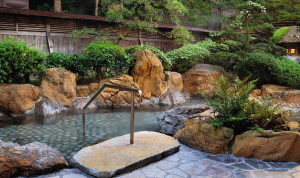100 Years After Tragedy, International Arrivals Soar in Japan's Tattoo-Friendly Hot Spring Town Kinosaki Onsen
In the late morning on May 23, 1925, a 6.8 magnitude earthquake hit Kinosaki Onsen. Since the earthquake struck during a time when most households were preparing for lunchtime, many residents were busy cooking. A fire quickly spread, resulting in 283 deaths and most buildings in ruin. After multiple meetings, locals decided that a handful of buildings, including the hot spring baths, would be reconstructed with reinforced concrete for the purpose of fire prevention. A new law requiring that building heights not exceed three stories was born out of the desire to preserve Kinosaki's traditional atmosphere.
Additionally, the ideas of coexistence and co-prosperity (𝘬𝘺𝘰𝘻𝘰𝘯-𝘬𝘺𝘰𝘦𝘪) were set as the core values for the future of Kinosaki's development and success as a tourist attraction. Instead of competing against one’s neighbor, local businesses sought to support one another through a joint effort to revitalize their town’s hot spring industry.
These century-old values still hold true today.
Kinosaki Onsen's protected landscape continues to charm international visitors. Arrivals from the United States, Taiwan, and Australia continue to grow. Recent surveys reveal widespread extreme satisfaction among tourists, many citing "traditional ambiance" and "friendly locals" along with multiple tattoo-friendly hot springs.
Danielle Leveille
Toyooka Tourism Innovation
info@toyooka-tourism.com
Legal Disclaimer:
EIN Presswire provides this news content "as is" without warranty of any kind. We do not accept any responsibility or liability for the accuracy, content, images, videos, licenses, completeness, legality, or reliability of the information contained in this article. If you have any complaints or copyright issues related to this article, kindly contact the author above.



